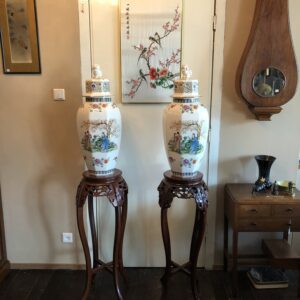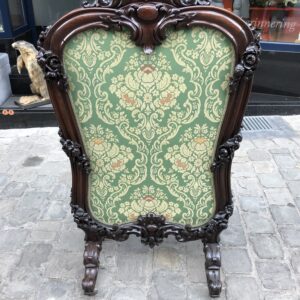Description
19th-century French decorative box, possibly a stationery, jewelry, or keepsake box, featuring Neoclassical and Rococo Revival elements.
Key Features & Description:
1. Design & Materials
Exterior:
Painted or lithographed panels with gilt detailing.
Depicts a mythological or allegorical scene, featuring a woman in a flowing gown (possibly Diana, the goddess of the hunt) with a dog and cherubs in a lush landscape.
Garland, ribbon, and musical motifs adorn the sides and edges, indicative of Neoclassical influence.
The base and edges are covered in fine velvet fabric, adding an elegant texture.
Interior:
Lined with delicate floral silk fabric.
The fabric shows signs of age-related wear and fraying, but the original pattern is still visible.
Lock & Hardware:
Gilt ormolu keyhole escutcheon in a decorative style, adding to its elegance.
The lock suggests it was meant to secure valuables or personal letters.
2. Function & Purpose
Likely used as a stationery, sewing, or jewelry box, given its elegant construction and lined interior.
The mythological scene suggests it was designed for an aristocratic or upper-class owner, reflecting refined taste.
3. Possible Origin & Time Period
France, dating from the Napoleon III era (Second Empire, c. 1850-1880).
The combination of neoclassical themes, elaborate gilt accents, and mythological imagery aligns with French decorative arts of the mid-to-late 19th century










